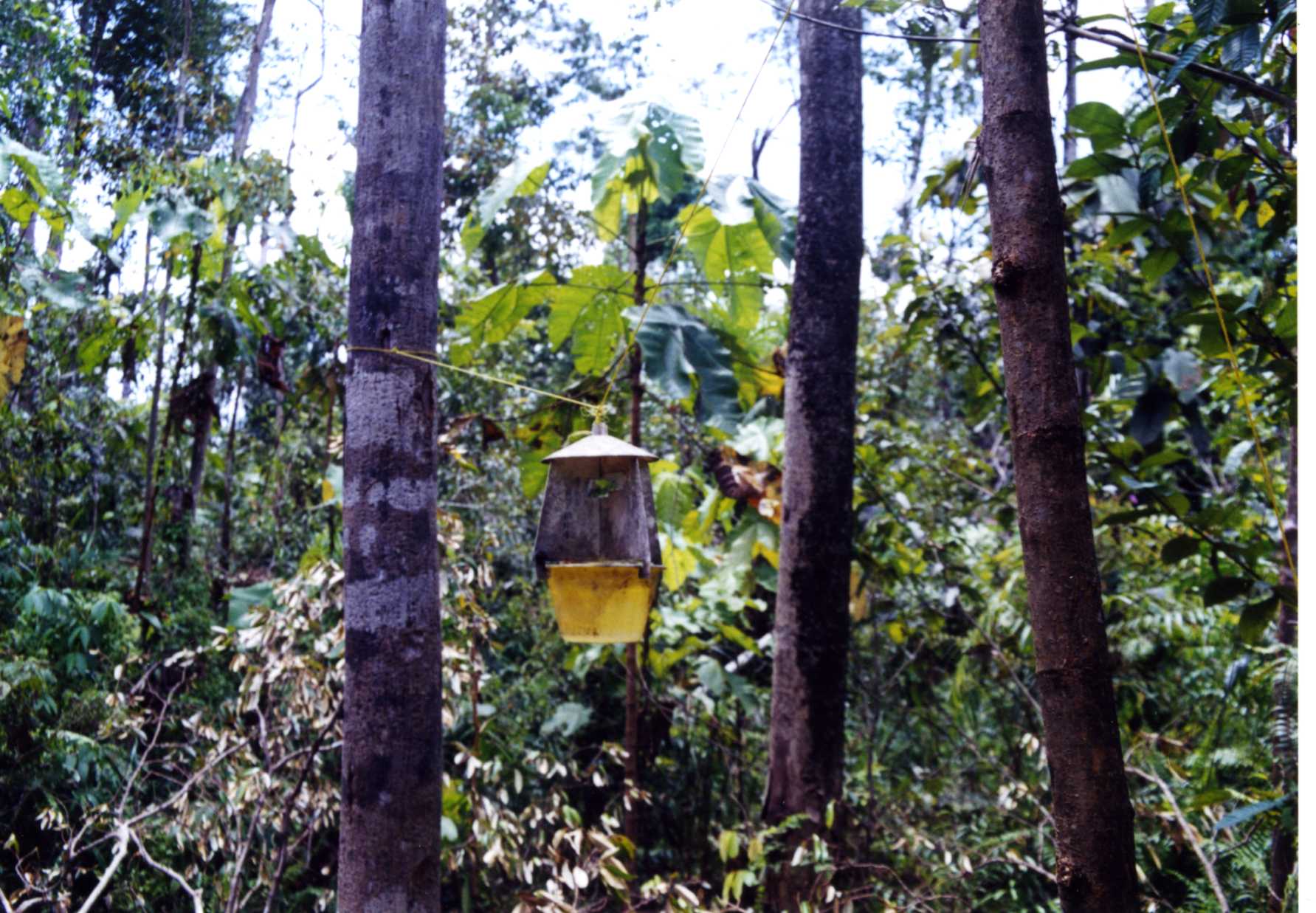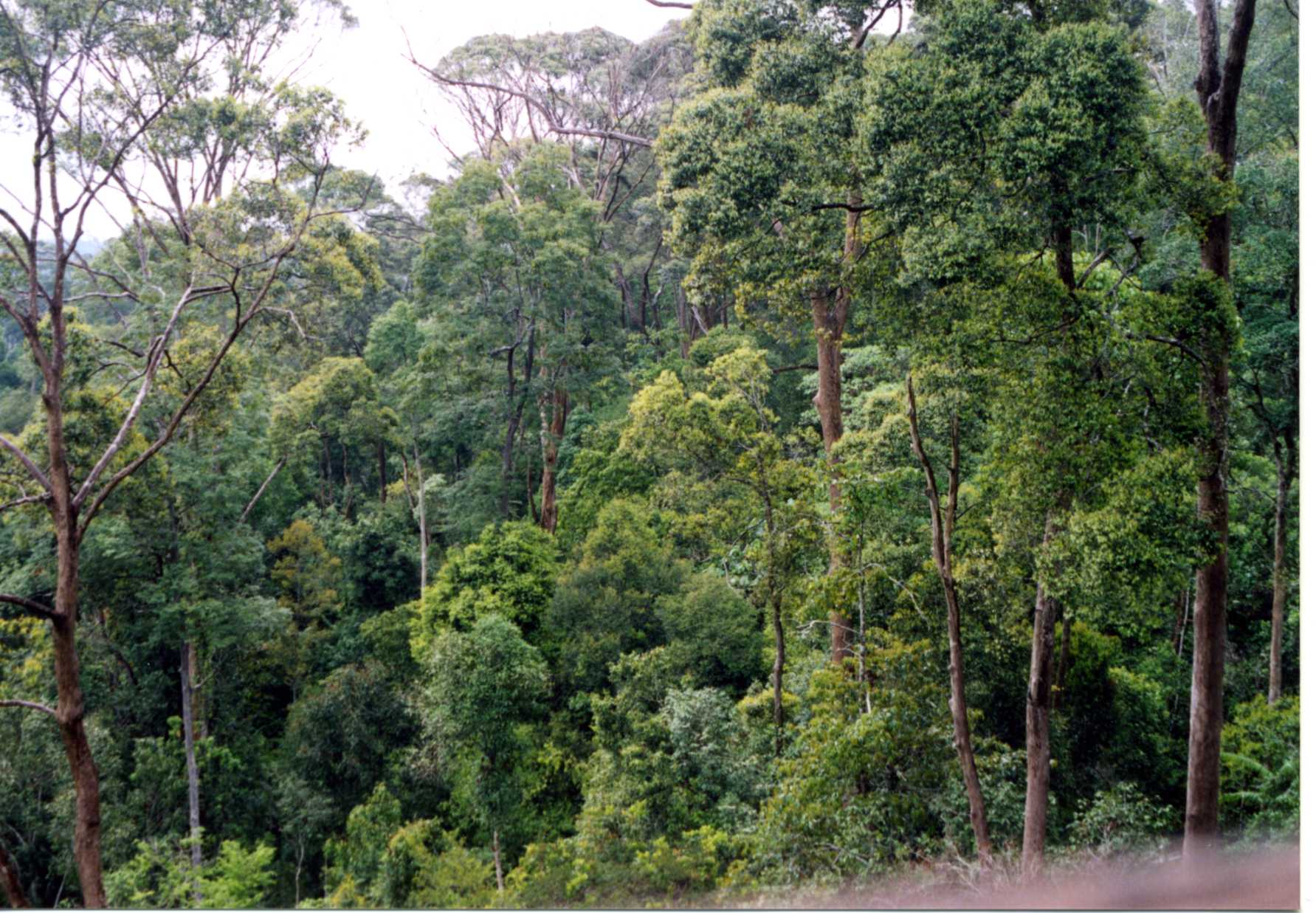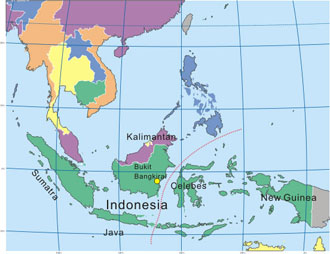| Longicorn beetles mainly feed on various trees. Because they often kill trees or decrease quality of wood, many of them are recognized as important forest pests. On the other hand, they conduct important ecosystem functions by promoting decomposition of dead trees as larvae or by pollinating many flowers as adults. They are thus important forest insects in various senses. |
|
About 35,000 species of longicorn beetles have been known from the world@(Catalogue of Life: http://www.catalogueoflife.org/col/browse/classification/name/Cerambycidae), |
| Longicorn beetles depend on trees as mentioned above, thus expected to well reflect conditions of forests they inhabit. Therefore, the inventorying of longicorns of a particular area will contribute to the understanding the forest conditions of the target area. About 470 species included in this image database were collected in a small part (300 ha) of Bukit Bangkirai (about 1,500ha) in east Kalimantan only in a short period between 1999 and 2001; this database is inevitably incomplete, possibly containing less than half of the species that actually inhabit Bukit Bangkirai. We believe, however, that this database contributes to the future study of biodiversity as an inventory of a valuable primary forest of Asian tropic. This research was financially supported by JICA (Japan International Cooperation Agency) and conducted by Forestry and Forest Products Research Institute (FFPRI, Japan) in cooperation with LIPI (Indonesian Institute of Sciences) and Mulawaruman University. We are grateful to the following colleagues for their help in identification: Dr. J.Yokoi (Institute for Agro-Environmental Sciences, NARO) for Mesosa, Dr. Y.Yokoi (Germany) for Ceresium, and Mr. A.Weigel (Austria) for some groups of Lamiinae. |
|
For further information of Indonesian longicorns, please refer to the following publications. 1) Makihara, H. and Woro A. Noerdjito (2004) Longicorn beetles of Museum Zoologicum Bogoriense, identified by Dr. E.F. Gilmour, 1963 (Coleoptera: Disteniidae and Cerambycidae). http://www.ffpri.affrc.go.jp/labs/kanko/390-7.pdf(24MB) 2) MAKIHARA H., Woro A. Noerdjito and Sugiarto (2002) Longicorn Beetles from Gunung Halimun National Park, West Java, Indonesia from 1997 - 2002 (Coleoptera, Disteniidae and Cerambycidae). http://www.ffpri.affrc.go.jp/labs/kanko/No384-4makihara.pdf(14MB) |
Collecting methods
 |
 |
| Bait trap of Artocarpus twigs. | Attractant trap with ethanol as odor. |
 |
 |
| Standard Malaise trap | Light trap |
The forest of Bukit Bangkirai
 |
 |
| Tropical forest of Bukit Bangkirai | Canopy bridge about 30 m above the ground |
